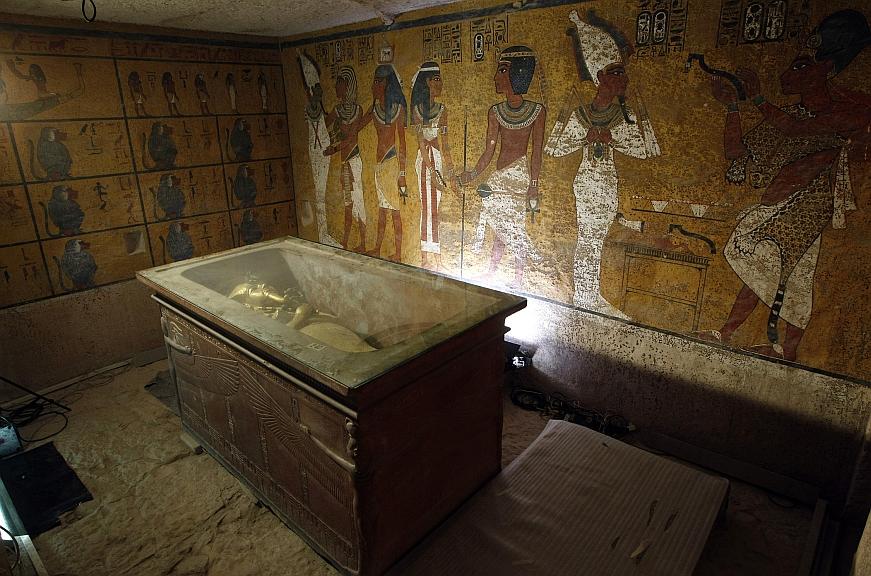Last month, the Tourism Minister of Egypt Hisham Zaazou appeared to have slipped up during a visit to Spain when he said the hidden chamber being investigated in Tutankhamun’s tomb is “full of treasures,” ahead of official press announcements due to take place in April.
While some questioned the motives and accuracy of such sensational claims, a press conference in Egypt has announced that new scans show metal and/or organic material within the hidden chamber, providing support for Zaazou’s claim there was another burial within the tomb.
“We do not know if the burial chamber is Nefertiti or another woman, but it is full of treasures,” Zaazou had said, according to ABC. “It will be a ‘Big Bang,’ the discovery of the 21st Century.”
According to Discovery News, Antiquities Minister Mamdouh al-Damaty told a press conference that in the latest studies, doors were detected, which can be seen as entrances to the cavities identified in Tutankhamun’s tomb; and that metal and organic material revealed by scans strongly suggests the presence of another burial.
Investigations in Tutankhamun’s Tomb
The Ministry of Antiquities in Egypt launched high-tech analyses within the boy king’s tomb on Nov. 4 after initial infrared scans of the walls of the tomb detected an area of greater heat, pointing to the presence of a hidden chamber.
The scans were designed to test the theory of archaeologist Nicholas Reeves that the tomb of Tutankhamun contains two hidden chambers and that one of them is the final resting place of Queen Nefertiti.
According to the Minister, the scans showed a 90 percent likelihood that there was something behind the walls.
Reeves first suspected hidden chambers in Tutankhamun’s tomb following a detailed examination of the Factum Arte scans of the artistic works on the walls of the tomb. Reeves noticed fissures that he thought indicated the presence of two sealed doors in the tomb’s north and west walls.
What Lies Within the Secret Chamber?
According to Reeves, King Tutankhamun’s tomb was unfinished when he died unexpectedly as a teenager in 1332 B.C. Consequently, he was hastily buried in the tomb of Queen Nefertiti, the principal wife of Akhenaten, who is believed to have fathered Tutankhamun with another wife.
Reeves believes that Tutankhamun’s tomb displaced part of Nefertiti’s tomb and assumed some of her burial goods and space.
However, Egypt’s Minister of Antiquities al-Damati believes otherwise. According to Agence France Press, Damati believes that a mummy buried in Tutankhamun’s tomb would more likely be Kiya, a wife of the pharaoh Akhenaten.
During his visit, Zaazou said there was also a theory that the chamber would be completely empty. However, he asserted that this has now been proven false. “It is not empty. It is full of treasures,” the minister said [via ABC]. “It will be an historic moment.”
Discovery News reports that additional scans will be carried out later this month to reconstruct the exact size of the chambers.
The Minister of Antiquities has said that multiple steps are planned in the ongoing investigations into Tutankhamun’s tomb.
“It’s a rediscovery that might lead us to the discovery of the century,” al-Damaty said.
Republished with permission. Read the original at Ancient Origins.




